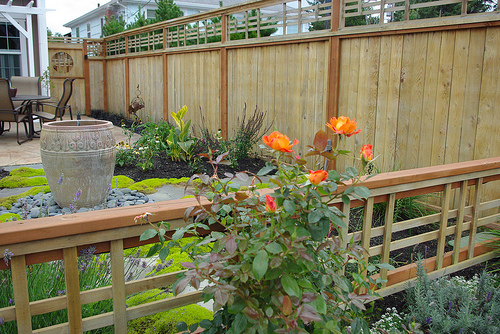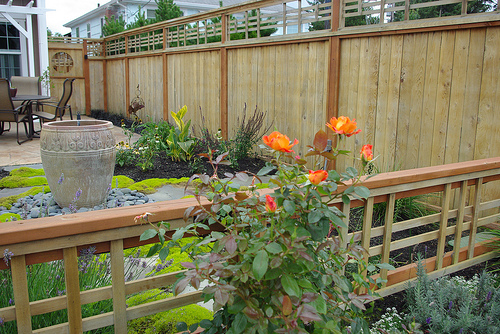When Miles and I moved into our home in 2000, we had a bare front yard. He created a lovely landscape design (birches, a dry creek bed, lovely ground covers), but we still needed a boundary between us and the street.
At first Miles proposed a solid fence. I couldn’t go there. While I wanted a clear sense of inside and outside, of public and private, having a boundary that couldn’t be seen through felt wrong. Instead of making me feel safe, it made me feel vulnerable, as though I needed a big wall between me and the outside world.
Miles then designed a trellis-like fence against which we planted a wisteria, a rose bush, and a honeysuckle. It gives us plenty of privacy without making us feel cut off from the world.
We need a similar sort of fence in business. But what do healthy boundaries look like, and how can you know where and how to set them?
I notice a tendency among small business owners and free agents to think of boundaries as ways to keep something or someone out. This emphasizes protection of their time, energy, and resources. This kind of boundary is a line in the sand. (Mixed metaphor alert!) When a customer, colleague, or vendor crosses the line, an alarm goes off, signaling the business owner to say “No.”
Because most of us want our businesses to be accessible and to offer excellent service, we are naturally conservative in setting this sort of boundary. After all, we want to say, “Welcome” to prospective customers and partners, not “Keep out.” As a result, we set boundaries at the last possible point to keep invaders at bay.
I’ve done this, by the way, so I know of what I speak. I know how confining this sort of boundary can be. There is no room to move. There is barely room to breathe. The longer this boundary stays in place–even if no one ever tries to cross it–the more confined, cramped, and edgy those inside the boundary will be.
After working inside this boundary for a while, it is natural to become impatient, cranky, even resentful. It is uncomfortable inside this boundary, and it can feel like this is the fault of those pushy customers, colleagues, and vendors out there. After all, if it weren’t for THEM, you’d be out in the fresh air.
But wait–a client is not an invader. A vendor is not a spy. A business is not a castle on a hill, placed there for strategic advantage against enemy forces. Let’s take a big breath and take another look at this business of boundaries.
What if boundaries were not last-ditch protections against marauders? What if they were lovely, sturdy fences defining a spacious and resource-rich territory in which you can do your best work? What if boundaries created a pasture rather than enclosing a cell?
Further, what if boundaries were designed to let in light and air? What if you could see out and others could see in? Working inside of these boundaries is quite a different experience. For one thing, there is plenty of room to move. When someone approaches your boundary, you have lots of choices about how to respond.
Maintaining these boundaries feels entirely different, too. With what pride of ownership and delight in the scope of our pasture we walk the fence line. How pleasing it is to oil the latches on the gates, to replace broken posts, to trim the hedges.
Check in with your boundaries this week. First, notice what constitute the fence posts and gates in your business. Are they the hours that you work? The rates you charge? The terms you offer for special services? Get familiar with the structural elements you can use to build your beautiful fence and gate.
When you’ve identified those elements, look at where you’ve placed them. Do your rates give you room to do your best work? Do your working arrangements give you breathing space? Examine your boundaries, and notice if they are giving you room to do your best work or cramping your style. Experiment with moving your boundaries out a bit, not to keep your customers away, but to create a bigger space from which you can serve them wholeheartedly and well.
As always, let me know what you are noticing. What problems or pains are solved (or dissolved) by this approach? What new problems and pains arise? Share your thoughts at my blog.
Photo by pb3131 via Flickr



